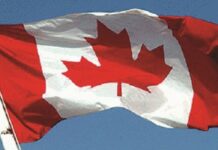MARCO Mendicino, federal Minister of Immigration, Refugees and Citizenship, tabling the 2021‒2023 Immigration Levels Plan on Friday, said that to compensate for the shortfall because of the pandemic and ensure Canada has the workers it needs to fill crucial labour market gaps and remain competitive on the world stage, the 2021 to 2023 levels plan aims to continue welcoming immigrants at a rate of about 1% of the population of Canada.
This includes 401,000 permanent residents in 2021, 411,000 in 2022 and 421,000 in 2023. The previous plan set targets of 351,000 in 2021 and 361,000 in 2022.
The government said the pandemic has highlighted the contribution of immigrants to the well-being of our communities and across all sectors of the economy. The health-care system relies on immigrants to keep Canadians safe and healthy. Other industries, such as information technology companies and our farmers and producers, also rely on the talent of newcomers to maintain supply chains, expand their businesses and, in turn, create more jobs for Canadians.
Although Immigration, Refugees and Citizenship Canada (IRCC) continued to accept and process applications throughout the pandemic, the global travel restrictions and capacity constraints led to a shortfall in admissions over the last several months.
The government said that the health, safety and security of Canadians remain our top priorities. Canada has strengthened health screening at the border as well as monitoring and enforcement, and will continue to closely follow the advice of public health officials as it welcome newcomers.
This multi-year levels plan recognizes the importance of family reunification and Canada’s global commitment to protecting those most at risk through refugee resettlement.
Highlights of the plan include:
* an increase in admissions over the three years of the plan to make up the shortfall in 2020
* a focus on economic growth, with about 60% of admissions to come from the Economic Class
* a continued focus on innovative and community-driven approaches to address diverse labour and demographic needs across the country
* a renewed commitment to capacity-building and digital transformation in Canada’s immigration system, to support operations and mitigate the impacts of COVID-19 on the processing of applications
* additional points for French-speaking candidates under Express Entry, to promote the growth of Francophone communities outside of Quebec
* a commitment to admit up to 500 refugees over the next two years through the Economic Mobility Pathways Project, an innovative approach that helps qualified refugees apply for permanent residence through existing economic immigration pathways
* a pathway to permanent residency for eligible asylum claimants who were working on the front lines of the pandemic between March 13 and August 14, 2020, providing direct care to patients in health-care institutions
The 2021–2023 Immigration Levels Plan will help cement Canada’s place among the world’s top destinations for talent, creating a strong foundation for economic growth while reuniting family members with their loved ones and fulfilling Canada’s humanitarian commitments, the government said.
Mendicino said: “Immigration is essential to getting us through the pandemic, but also to our short-term economic recovery and our long-term economic growth. Canadians have seen how newcomers are playing an outsized role in our hospitals and care homes, and helping us to keep food on the table. As we look to recovery, newcomers create jobs not just by giving our businesses the skills they need to thrive, but also by starting businesses themselves. Our plan will help to address some of our most acute labour shortages and to grow our population to keep Canada competitive on the world stage.”
Quick Facts
* Immigrants account for 33% of all business owners with paid staff, and 25% of workers in our health sector are immigrants.
* The Immigration and Refugee Protection Act requires the levels plan be tabled in Parliament each year.
* The levels plan is a projection of how many permanent residents will be admitted to Canada, setting targets and ranges for overall admissions, as well as for each immigration category.
* The levels plan takes into account extensive engagement with provincial and territorial representatives, as well as public opinion research and stakeholder consultations.
* Canadians across the country can see how newcomers are benefiting local communities through IRCC’s Immigration Matters campaign.
* Under the Canada-Quebec Accord, Quebec establishes its own immigration levels.
More Info:
· 2021‒2023 Immigration Levels Plan and Supplementary Information













